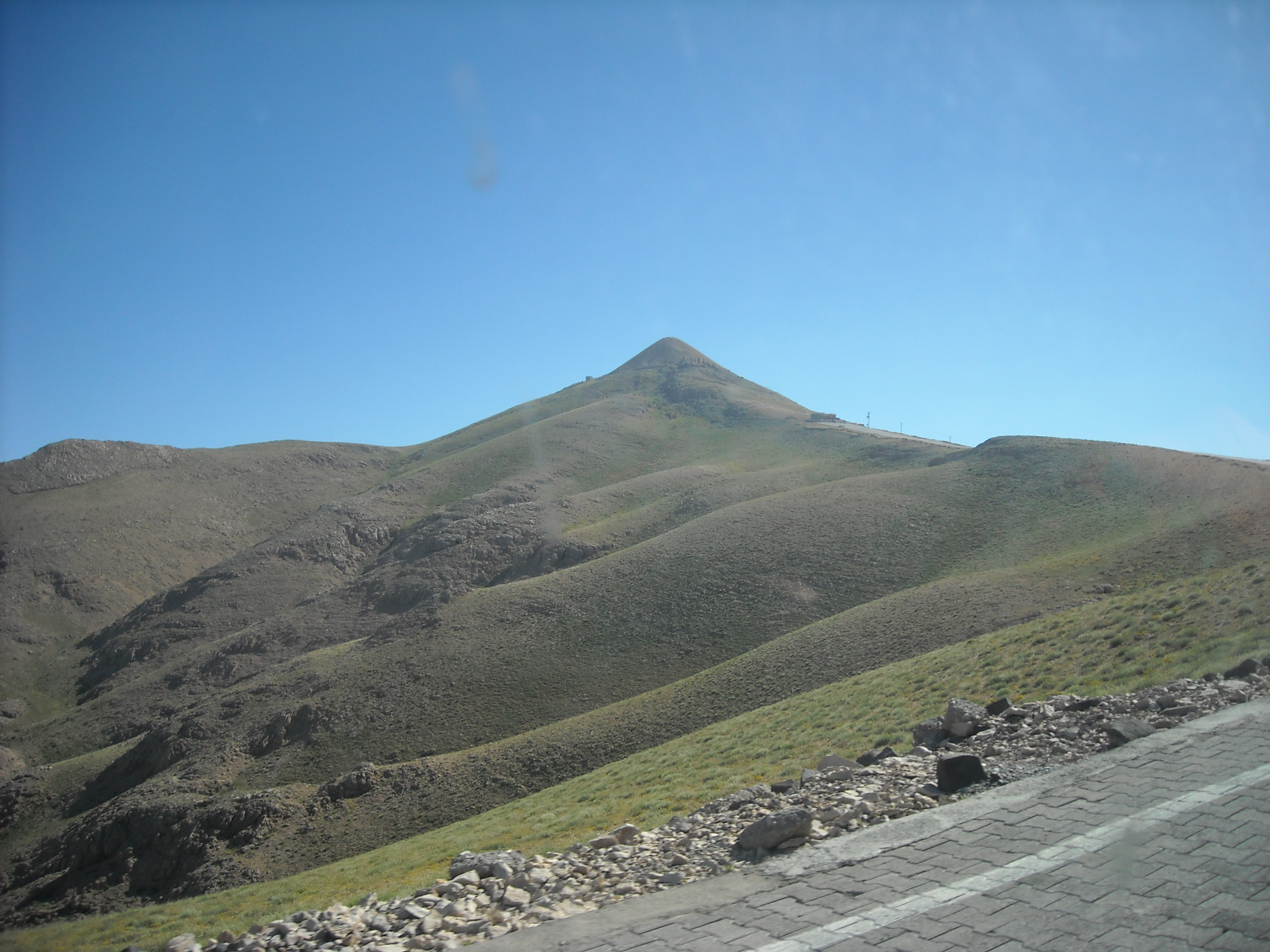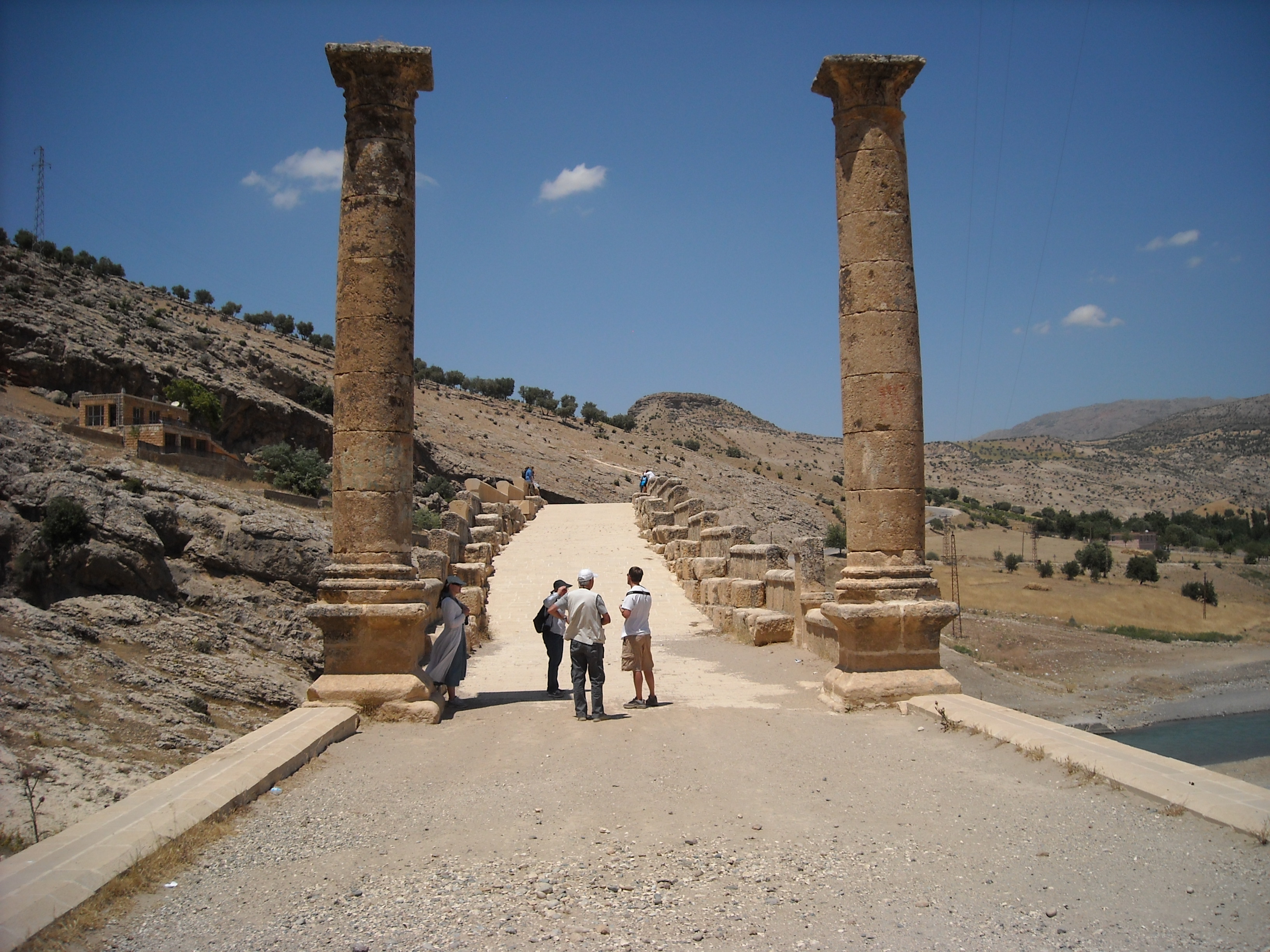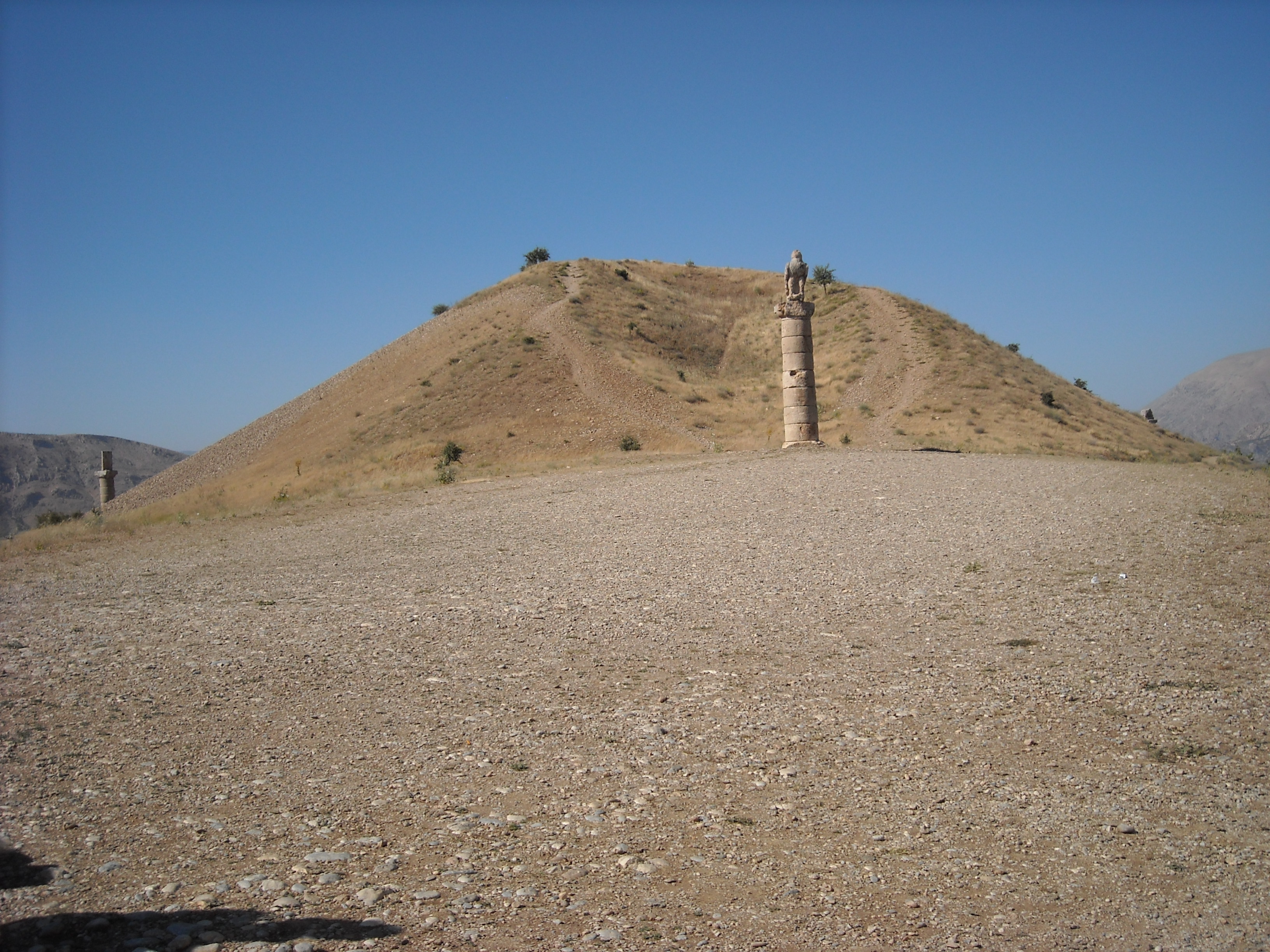Today we traveled to Mount Nemrut (Nemrut Daği). So far this has been my favorite part of our trip. Mount Nemrut was an amazing site. However getting there was a bit sketchy. The van driver did not drive on the windy mountain roads like I am used to. I felt sometimes that we were going to go over the edge. I was also at a window seat, so it didn’t help being able to see how close to the edge of the road we were. We didn’t die on the road, and were able to get up top of Mount Nemrut with out any injury.
 After scrambling out of the car, we walked up to the East Terrace. It doesn’t seem like much, but walking, even on the path at Mt. Nemrut was difficult for me due to the altitude. I grew up, and live in a valley my entire life. I also really do not like heights. I tend to avoid them as much as possible, so walking up to the East Terrace was kind of an accomplishment for me. I was able to force myself to walk on a narrow path on the largest mountain in the area. This is something that I can’t say I have ever done before.
After scrambling out of the car, we walked up to the East Terrace. It doesn’t seem like much, but walking, even on the path at Mt. Nemrut was difficult for me due to the altitude. I grew up, and live in a valley my entire life. I also really do not like heights. I tend to avoid them as much as possible, so walking up to the East Terrace was kind of an accomplishment for me. I was able to force myself to walk on a narrow path on the largest mountain in the area. This is something that I can’t say I have ever done before.
When I reached the terrace, I was pretty amazed. There was a large raised platform that I could sit on and look around at the surrounding landscape as well as out on the tumulus and the statues of the gods. I found it very interesting that Antiochus would have a statue of himself placed at the same level as the Gods. He was the ruler of this fairly small kingdom of Kommagene, yet he was able to create a cult around himself that people actually followed. The tumulus that he had constructed to be his burial place is 150 m high and has a 50 meter radius. His burial chamber was never found, and no one has the clearance to excavate the tumulus to continue to look for it. This site also had two of the longest Greek inscriptions in Asia Minor. The last thing that I found really interesting is that Teresa Goell, the first female that excavated in Turkey, was not mentioned in any of the Guide books that we looked at, and was not mentioned by the tour guide at all. When she was mentioned at the site, the tour guide had seemed like he had never heard of her. I am wondering if this is because they do not like to talk about female archaeologists’ accomplishments, or if it was because they simply did not like this woman. However, she did spend a large amount of time at this site, and even camped out in the summer and winter.
After Mount Nemrut, we continued to Arsameia. Arsameia was originally constructed in the third century BCE, by the Kommagene family Arsames. However, most of the artifacts and structures we saw today were made in the first century BCE. We walked along the path, which may have been the original path from the third century BCE, and we looked at two reliefs with carvings of deities on the front with inscriptions on the back.
Then we were shown to a cave that ended with iron bars keeping people from entering. The second tunnel we were shown, however, was not blocked off.
A small group of us (five including me) climbed down to the bottom of the cave tunnel to see if it opened up to anything, such as the burial chamber, it was supposed to be connected to. After climbing down for what seemed a long time, the group reached the bottom, which abruptly came to an end because the tunnel was filled in with rocks. I enjoyed this part of the day very much. It is not everyday that you can climb down into a tunnel which once lead to a burial chamber of a king. The first bit of the tunnel was easy to get down into due to the carved stairs. However, as the tunnel continued, the stairs were replaced with a simple dirt tunnel which you had to use the walls to keep yourself from falling too fast down the tunnel. Climbing back up the tunnel was much easier and much quicker than going down. However, both ways I accidently kicked some loose rocks which hit one of the guys that went down ahead of me.
After Arsameia, we visited the Septimus Severus Bridge. The Roman Bridge (Septimius Severus Bridge) we visited crossed over the Cendere (Cabinas) River, which is a tributary of the Kafta River (which is also a tributary of the Euphrates River).  This bridge was built in the second century CE by the XVI Legion. The bridge is 7 meters 50 centimeters wide, which was just enough space for 10 people to walk across together. There was no extra space given, so that the soldiers were not given any luxury. There were columns erected which had inscriptions on dedicating them and the bridge to the Emperor Sentimius Severus (who lived 193-211 CE) and his wife and two sons, Caraealla and Geta. When Geta was killed, his column was removed as commanded by Emperor Caraealla, which was the custom at the time. I found it amazing that the bridge was still standing, and that 10 people can actually stand abreast on it (there were ten of us, so we actually tried it).
This bridge was built in the second century CE by the XVI Legion. The bridge is 7 meters 50 centimeters wide, which was just enough space for 10 people to walk across together. There was no extra space given, so that the soldiers were not given any luxury. There were columns erected which had inscriptions on dedicating them and the bridge to the Emperor Sentimius Severus (who lived 193-211 CE) and his wife and two sons, Caraealla and Geta. When Geta was killed, his column was removed as commanded by Emperor Caraealla, which was the custom at the time. I found it amazing that the bridge was still standing, and that 10 people can actually stand abreast on it (there were ten of us, so we actually tried it).
Karakuş Tumulus was the last place we stopped on the way to the hotel. This tumulus was a memorial grave for the Kommagene Royal family of the first century BCE. We didn’t spend much time here, and there was not much that we talked about. However, it was interesting to compare this smaller tumulus to the one on top of Mt. Nemrut. It is much smaller in comparison, but it was created in the same time period.

Location: Euphrat Hotel Nemrut Dagi-Karadut Koyu 02446 Kahta-Adiyaman, Turkey

